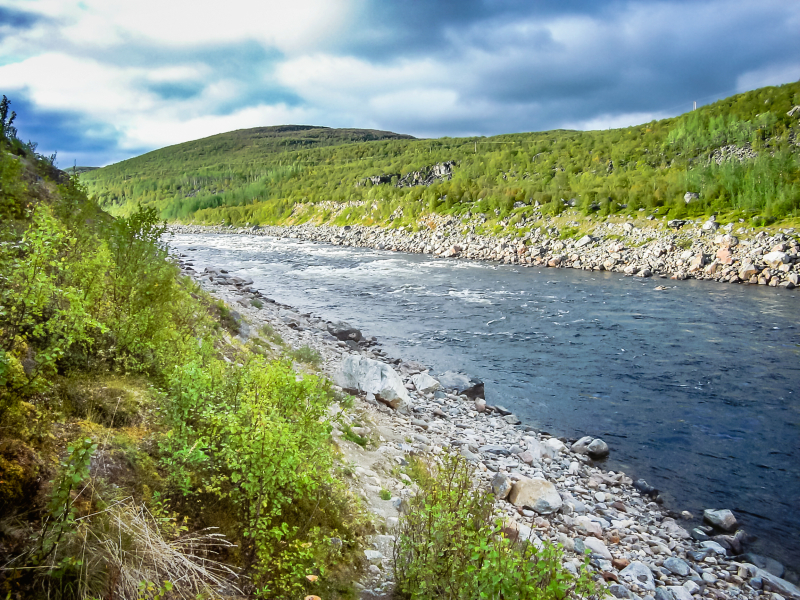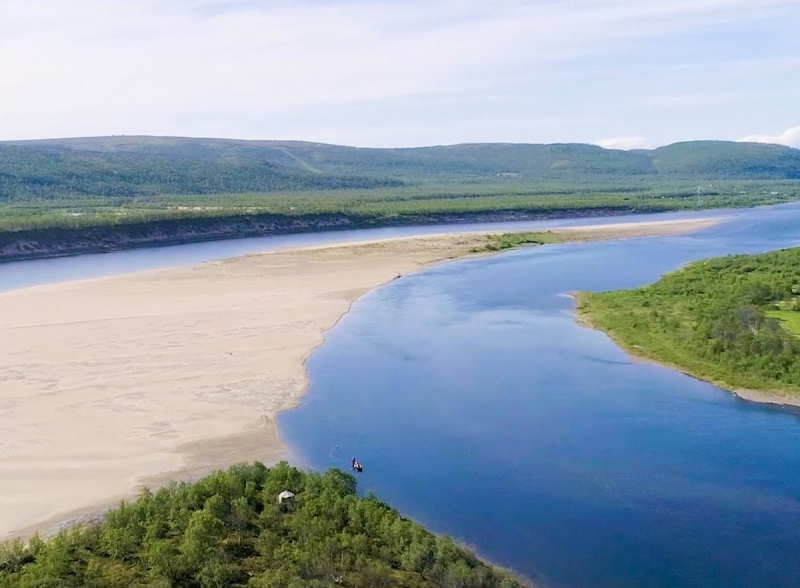Tana

The Tana is a 361-kilometer (224-mile) long river in northern Fennoscandia's Sápmi region. The river flows through Norway's Troms og Finnmark county and Finland's Lapland region. The Sámi name translates to "Great River." Tana's main tributaries are Anarjohka and Karasjohka.
It runs for 256 kilometers (159 miles) along the Finnish–Norwegian border, between the municipalities of Utsjoki in Finland and Karasjok and Tana in Norway. The river is Norway's fifth-longest. The river flows through the Norwegian municipality of Tana for the last 105 kilometers (65 miles). The river empties into the Tanafjorden, one of Europe's largest and most pristine river deltas. The delta is protected and serves as an important habitat for wetland birds. The delta contains large sand deposits that are exposed sandbars at low tide.
Authorities in Norway and Finland have decided not to allow salmon fishing in 2021. (in the river). The Tana River is well known for its excellent salmon fishing and is the most productive salmon river in both Finland and Norway. A salmon caught on the Tana holds the world record for Atlantic salmon; it weighed 36 kilograms (79 pound) and was caught in 1929 by the late Nils Mathis Walle.
Length: 361 km (224 mi)











